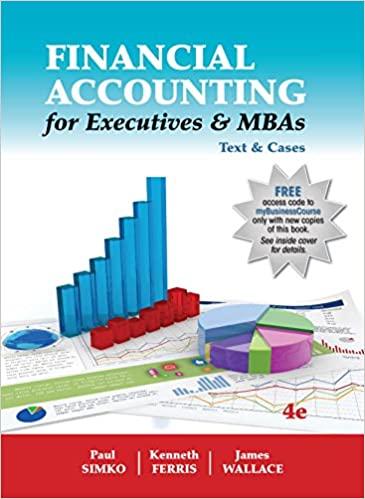The 2014 annual report of The Procter & Gamble Company (P&G) is available at Procter & Gambles
Question:
The 2014 annual report of The Procter & Gamble Company (P&G) is available at Procter & Gamble’s website. http://www.pginvestor.com/interactive/lookandfeel/4004124/PG _Annual Report 2014.pdf.
After reviewing P&G’s annual report, respond to the following questions:
a. Prepare pro forma income statements for 2012, 2013, and 2014, using the following assumptions.
Round all amounts to the nearest million. (You will need to access the 2011 annual report for your historical data accumulation.)
* Sales will grow by 0.4 percent annually.
* Cost of goods sold will remain 51.0 percent of sales.
* Selling, general and administrative expense will amount to 31.0 percent of sales.
* Interest expense will be 2.5 percent times the beginning-of-year “debt due in one year” plus 2.5 percent times the beginning-of-year “long-term debt.”
* Other non-operating income will amount to 0.2 percent of sales.
* The effective tax rate will remain 22.0 percent.
b. Prepare pro forma balance sheets for 2012, 2013, and 2014, using the following assumptions:
Assets:
* Total assets will maintain a turnover rate of 0.58 times.
* Cash and cash equivalents will grow at the same rate as sales.
* Accounts receivable will maintain a turnover rate of 13.0 times.
* Inventories (total) will maintain a turnover rate of 5.5 times.
* Deferred income taxes will remain flat each year at the 2011 level.
* Prepaid expenses and other current assets will remain flat each year at the 2011 level.
* Net property, plant and equipment will maintain a fixed asset turnover of 4.5 times.
* Net goodwill and other intangible assets will maintain an intangible assets turnover of 0.92 times.
* Other current assets will remain constant at the 2011 level.
Liabilities:
*‘Total liabilities and shareholders’ equity will equal forecasted total assets.
* Accounts payable will maintain a turnover rate of 5.1 times.
* Accrued and other liabilities will remain constant at the 2011 level.
* Debt due within one year is a plug figure to balance the total liabilities and total shareholders’ equity with total assets.
* Long-term debt will remain constant at the 2011 level.
* Deferred income taxes will remain constant at the 2011 level.
* Other noncurrent liabilities will remain constant at \($9,000\).
Shareholders’ equity:
* Convertible preferred stock, common stock (at par), and additional paid-in-capital will remain constant at the 2011 level as the company will finance all growth and operating needs using shortterm debt.
* Reserve for ESOP debt retirement and other comprehensive income will remain constant at the 2011 level.
* Treasury stock repurchases remain constant at the 2011 level.
* Non-controlling interest will remain constant at the 2011 level.
* Ending retained earnings equals beginning retained earnings plus net earnings attributable to P&G less dividends paid.
* P&G is assumed to grow its dividend at the same 0.4% rate as the growth in sales.

c. Using the pro forma income statements from part (a) and pro forma balance sheets from part (b), prepare pro forma statements of cash flow for 2012, 2013, and 2014.
Assume that the depreciation and amortization expense equals five percent of the beginning-of-year balance of net property, plant and equipment plus net goodwill and other intangible assets.
* Assume no gain or loss on sale of assets.
d. Calculate the equity value of Procter & Gamble using the discounted cash flow approach and the following assumptions:
* P&G's cost of equity is 7 percent.
* Assume that the growth rate (g) of free cash flow is 3 percent after 2014.
How does your estimate of firm value compare to P&G’s current market capitalization?
e. After completing the pro forma financial statements in part (b) above, return to P&G’s website and compare your pro forma results to the company’s actual results for the period 2012 through 2014. How well do the pro forma data match up with the company’s actual results? Which assumption(s) in part (b)were primarily responsible for any observed variances?
Step by Step Answer:

Financial Accounting For Executives And MBAs
ISBN: 9781618531988
4th Edition
Authors: Wallace, Simko, Ferris





